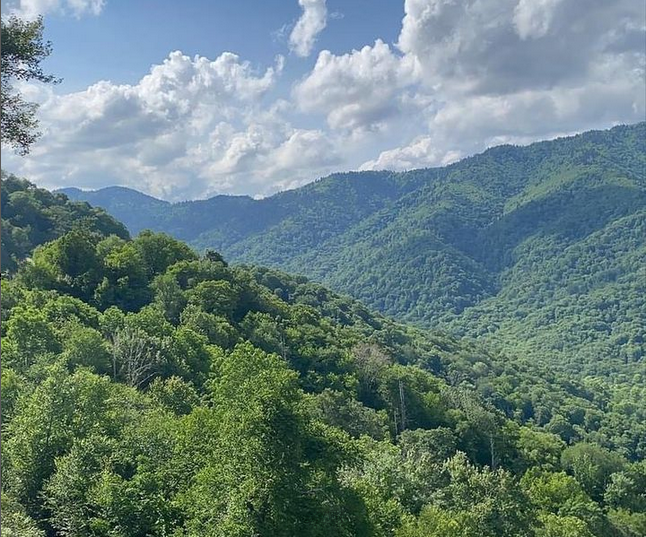The United States is home to a diverse array of breathtaking natural landscapes, and the National Parks system showcases the country’s commitment to preserving these treasures. While many iconic National Parks are located in the western United States, the eastern side of the country boasts a collection of equally remarkable parks. From rugged coastlines and ancient forests to majestic mountains and vibrant swamps, the National Parks east of the Mississippi River offer visitors a chance to immerse themselves in the rich natural and cultural heritage of the region. In this extensive article, we will explore the twelve captivating National Parks situated east of the Mississippi River, highlighting their unique features, history, and the unforgettable experiences they offer.

Acadia National Park
Situated along the rugged coast of Maine, Acadia National Park is a captivating blend of rocky shorelines, lush woodlands, and majestic mountains. This park offers stunning vistas of the Atlantic Ocean, picturesque islands, and the iconic Cadillac Mountain, the tallest peak on the East Coast. Visitors can explore an extensive network of trails, go camping, enjoy wildlife watching, and visit historic sites such as Jordan Pond and the Bass Harbor Head Lighthouse. Acadia National Park showcases the raw beauty of coastal New England and invites visitors to connect with nature in a truly unforgettable setting.

Shenandoah National Park

Nestled in the Blue Ridge Mountains of Virginia, Shenandoah National Park is a haven of natural beauty and tranquility. The park’s scenic Skyline Drive winds along the crest of the mountains, offering breathtaking views of the Shenandoah Valley and the surrounding Appalachian Mountains. Hiking trails like the famous Appalachian Trail, cascading waterfalls, and abundant wildlife provide endless opportunities for adventure and exploration. Visitors can also delve into the region’s cultural heritage through visits to historic cabins and the restored Skyland Resort. Shenandoah National Park is a testament to the timeless beauty of the Southern Appalachians and offers a peaceful retreat for nature lovers.

Great Smoky Mountains National Park

Straddling the border between Tennessee and North Carolina, Great Smoky Mountains National Park is a natural wonderland renowned for its biodiversity and stunning mountain vistas. As the most visited National Park in the United States, it offers a plethora of outdoor activities, including hiking, fishing, camping, and wildlife watching. The park is home to thousands of plant and animal species, and its mist-covered peaks, vibrant forests, and rushing streams create a serene and magical atmosphere. Visitors can also delve into the region’s rich cultural heritage through preserved historic structures and living history demonstrations. Great Smoky Mountains National Park is a cherished gem of the East, offering an immersive experience in the heart of the Southern Appalachian Mountains.

Everglades National Park
Spanning the southern tip of Florida, Everglades National Park is a UNESCO World Heritage Site and an International Biosphere Reserve. Often referred to as the “River of Grass,” the Everglades is a unique and fragile ecosystem, encompassing a diverse range of habitats such as freshwater marshes, mangrove forests, and sawgrass prairies. Exploring the park’s waterways by canoe, kayak, or airboat offers visitors an up-close encounter with its rich biodiversity, including alligators, manatees, and numerous bird species. Educational programs and guided tours provide valuable insights into the park’s importance as a habitat for endangered species and its role in water conservation. Everglades National Park is a testament to the resilience of nature and offers a glimpse into a truly extraordinary and fragile ecosystem.
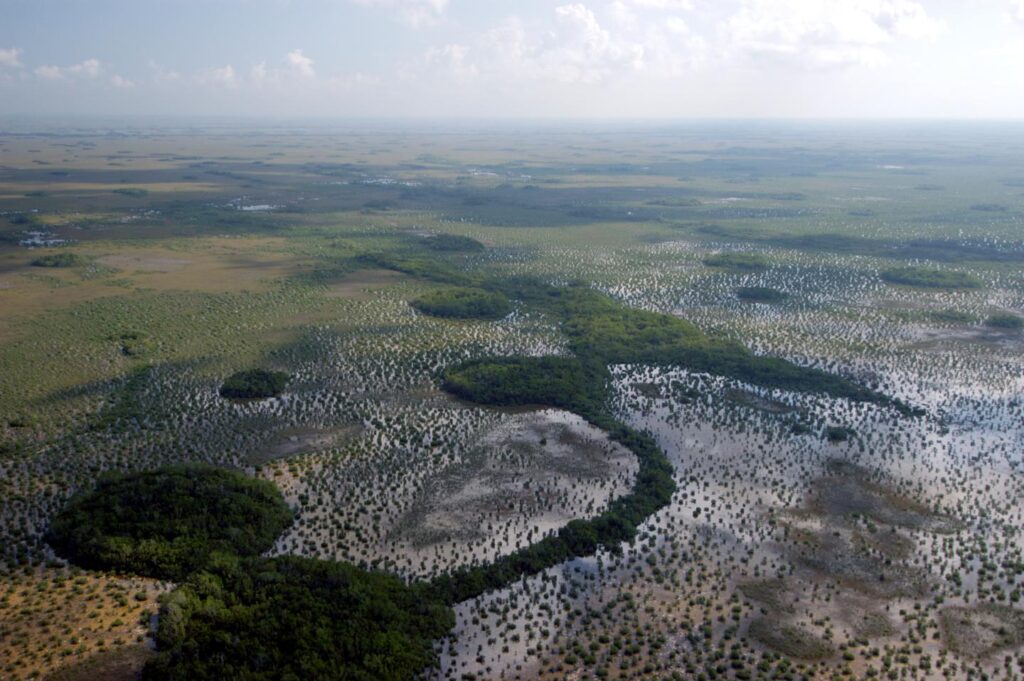

Mammoth Cave National Park
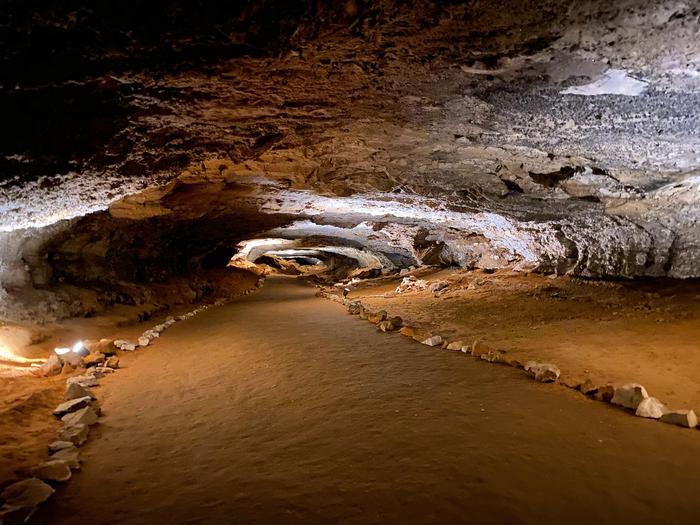
Located in Kentucky, Mammoth Cave National Park boasts the world’s longest known cave system, with more than 400 miles of explored passages. The park offers a unique underground experience, with guided tours leading visitors through awe-inspiring chambers, towering stalactites, and intricate rock formations. Above ground, the park encompasses a diverse landscape of forested hills and meandering rivers, providing opportunities for hiking, camping, and wildlife observation. Exploring the depths of Mammoth Cave is like stepping into a hidden world of wonder and mystery, and the park’s surface features are equally enchanting, making it a must-visit destination for adventure seekers and nature enthusiasts alike.

Cuyahoga Valley National Park
Nestled between the cities of Cleveland and Akron in Ohio, Cuyahoga Valley National Park offers an oasis of natural beauty amidst an urban landscape. The park follows the path of the Cuyahoga River, winding through lush forests, picturesque waterfalls, and rolling hills. Visitors can enjoy scenic train rides, hike along the extensive trail system, or explore the historic Ohio & Erie Canal Towpath Trail. The park also hosts cultural events and programs, highlighting the region’s history and providing a vibrant connection between nature and community. Cuyahoga Valley National Park offers a refreshing retreat and a chance to reconnect with the natural world amid the bustling Midwest.


Congaree National Park
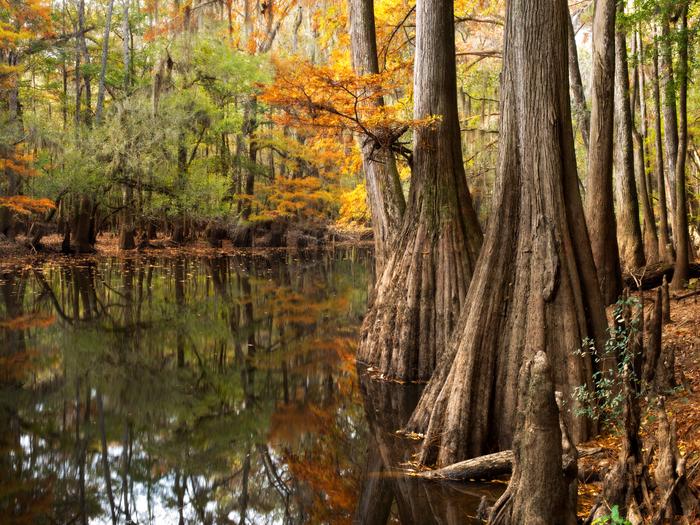
Located in South Carolina, Congaree National Park showcases one of the largest intact expanses of old-growth bottomland hardwood forest in the United States. The park’s towering trees, diverse wildlife, and pristine ecosystems provide a unique opportunity for visitors to immerse themselves in a truly wild environment. Congaree offers a variety of recreational activities, including hiking, canoeing, and camping. Guided tours and educational programs introduce visitors to the park’s rich natural and cultural heritage, offering a deeper understanding of the unique ecological processes that shape this vibrant landscape. Congaree National Park is a hidden gem that reveals the enchanting beauty of the Southern Lowlands.

Biscayne National Park

Situated within sight of downtown Miami, Biscayne National Park protects a diverse marine ecosystem encompassing vibrant coral reefs, crystal-clear waters, and lush seagrass beds. The park offers an underwater wonderland for visitors to explore through snorkeling, diving, or kayaking, where they can encounter colorful fish, sea turtles, and even shipwrecks. The park also includes a series of small islands, offering opportunities for boating, fishing, and birdwatching. Biscayne National Park provides a unique escape into the underwater world, allowing visitors to discover the beauty and fragility of marine life right at the doorstep of a bustling metropolis.

Dry Tortugas National Park
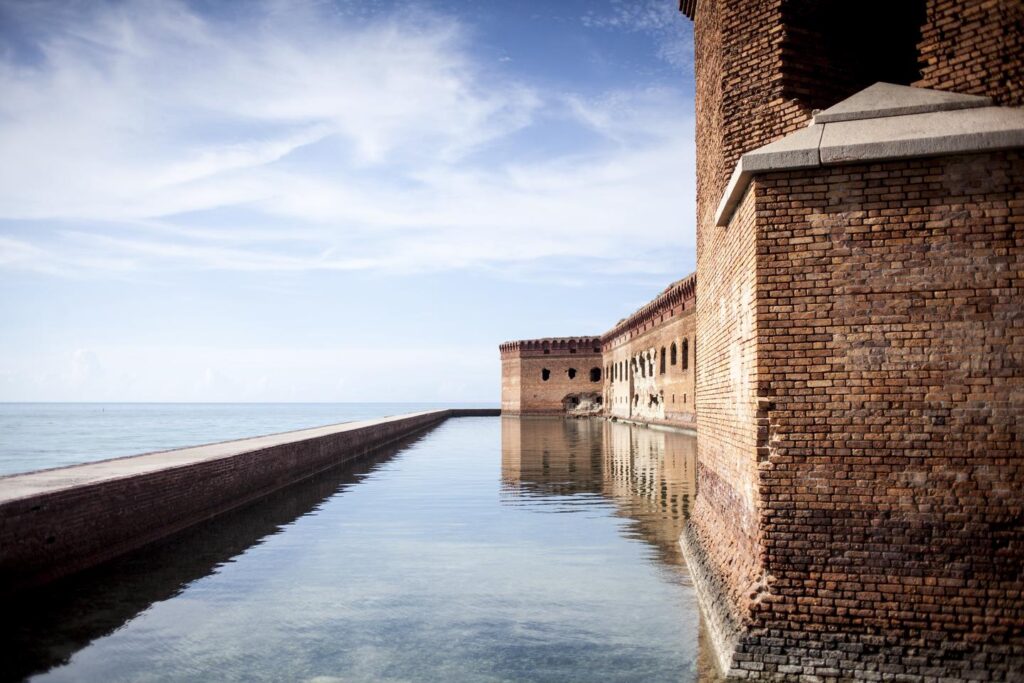
Located 70 miles west of Key West, Florida, Dry Tortugas National Park is a remote and pristine archipelago known for its vibrant coral reefs, historic Fort Jefferson, and abundant marine life. Accessible only by boat or seaplane, the park offers a unique adventure for those seeking solitude and a deeper connection with nature. Snorkeling and scuba diving in the crystal-clear waters allow visitors to witness the colorful coral reefs teeming with tropical fish, while exploring Fort Jefferson provides a glimpse into the area’s rich history. Dry Tortugas National Park is an isolated paradise where natural beauty, history, and seclusion combine to create an unforgettable experience.

Voyageurs National Park:
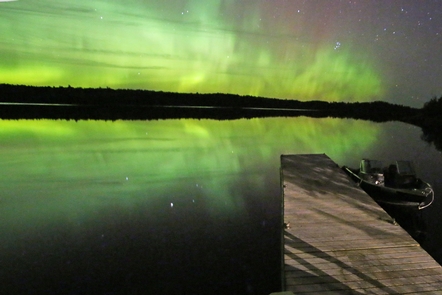
Stretching across the border of Minnesota and Canada, Voyageurs National Park is a water-based paradise characterized by interconnected lakes, rugged islands, and lush forests. With over 84,000 acres of water and countless islands, the park offers unparalleled opportunities for boating, fishing, and kayaking. Visitors can explore the park’s picturesque waterways, observe diverse wildlife such as moose and bald eagles, and enjoy the tranquility of the Northwoods. Voyageurs National Park provides a unique wilderness experience where the journey is as important as the destination, and where the beauty of nature unfolds around every bend.

Isle Royale National Park
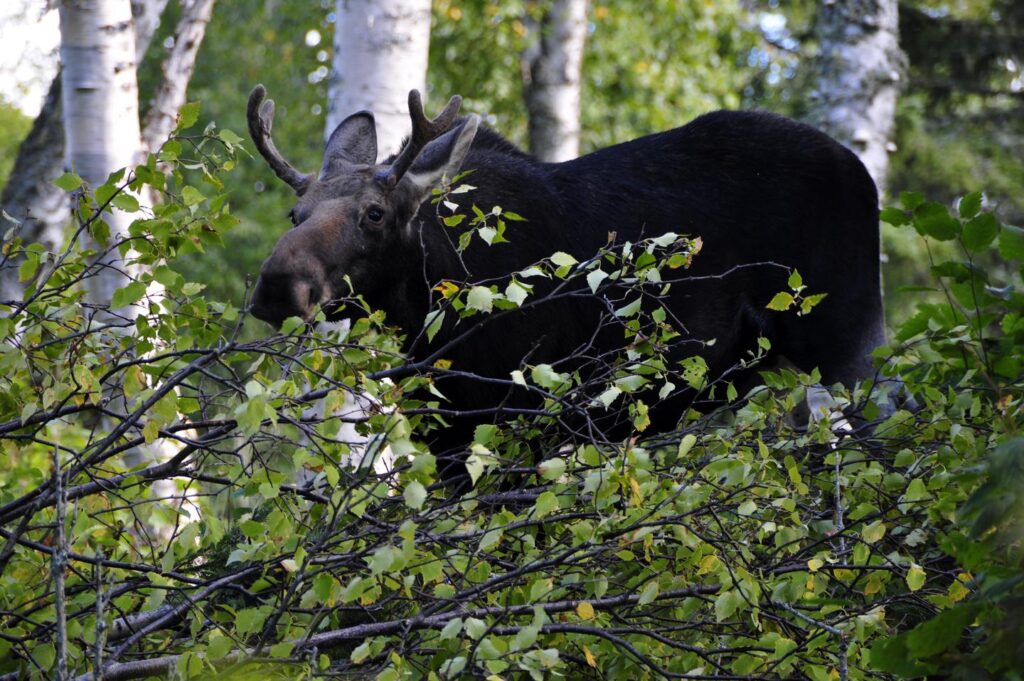
Isle Royale National Park is a remote and pristine island located in Lake Superior, Michigan. Known for its rugged beauty, pristine wilderness, and thriving wolf and moose populations, this park offers a truly off-the-beaten-path experience. Visitors can explore the island’s extensive trail system, paddle along its pristine shoreline, and immerse themselves in the serene and untouched natural landscapes. Isle Royale National Park is a haven for backpackers, kayakers, and wildlife enthusiasts, providing a unique opportunity to witness the delicate balance of nature in a remote and untouched setting.

Indiana Dunes National Park
Located along the southern shore of Lake Michigan in Indiana, Indiana Dunes National Park is a captivating blend of sandy beaches, towering sand dunes, and diverse ecosystems. The park offers stunning vistas of the lake and the Chicago skyline in the distance, making it a popular destination for outdoor enthusiasts and city dwellers seeking respite. Visitors can hike through dune trails, swim in the refreshing waters, or explore the park’s wetlands and forests, home to a variety of plant and animal species. Indiana Dunes National Park is a unique gem that showcases the delicate balance between nature and urban landscapes, offering a scenic escape for all.
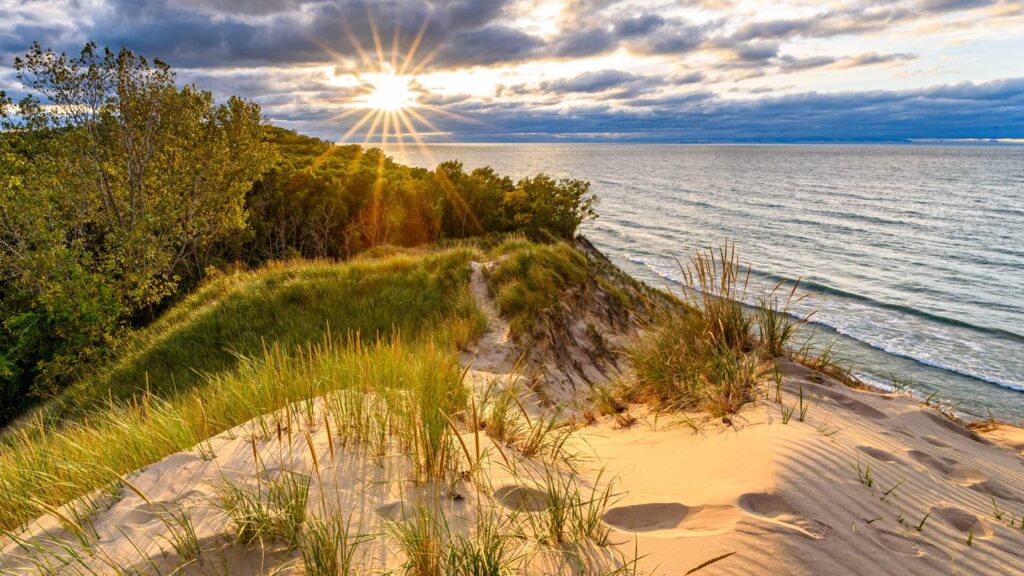
Conclusion
The National Parks east of the Mississippi River showcase the incredible natural and cultural diversity of the region. From the rugged coastline of Acadia National Park in Maine to the pristine swamps of Everglades National Park in Florida, these protected areas offer visitors a chance to connect with nature, explore unique ecosystems, and immerse themselves in the rich history and cultural heritage of the Eastern United States. Whether hiking through ancient forests, kayaking along crystal-clear waters, or discovering hidden caves, each park presents an opportunity for adventure and discovery. So, pack your bags, embark on a journey, and witness the awe-inspiring beauty and remarkable stories that await in the National Parks east of the Mississippi River.
Disclaimer
Where We Tow Now and OutdoorsHub is a participant in an affiliate advertising program designed to provide a means for sites to earn advertising fees by advertising and linking to various products for sale. Read our privacy policy for more information.
